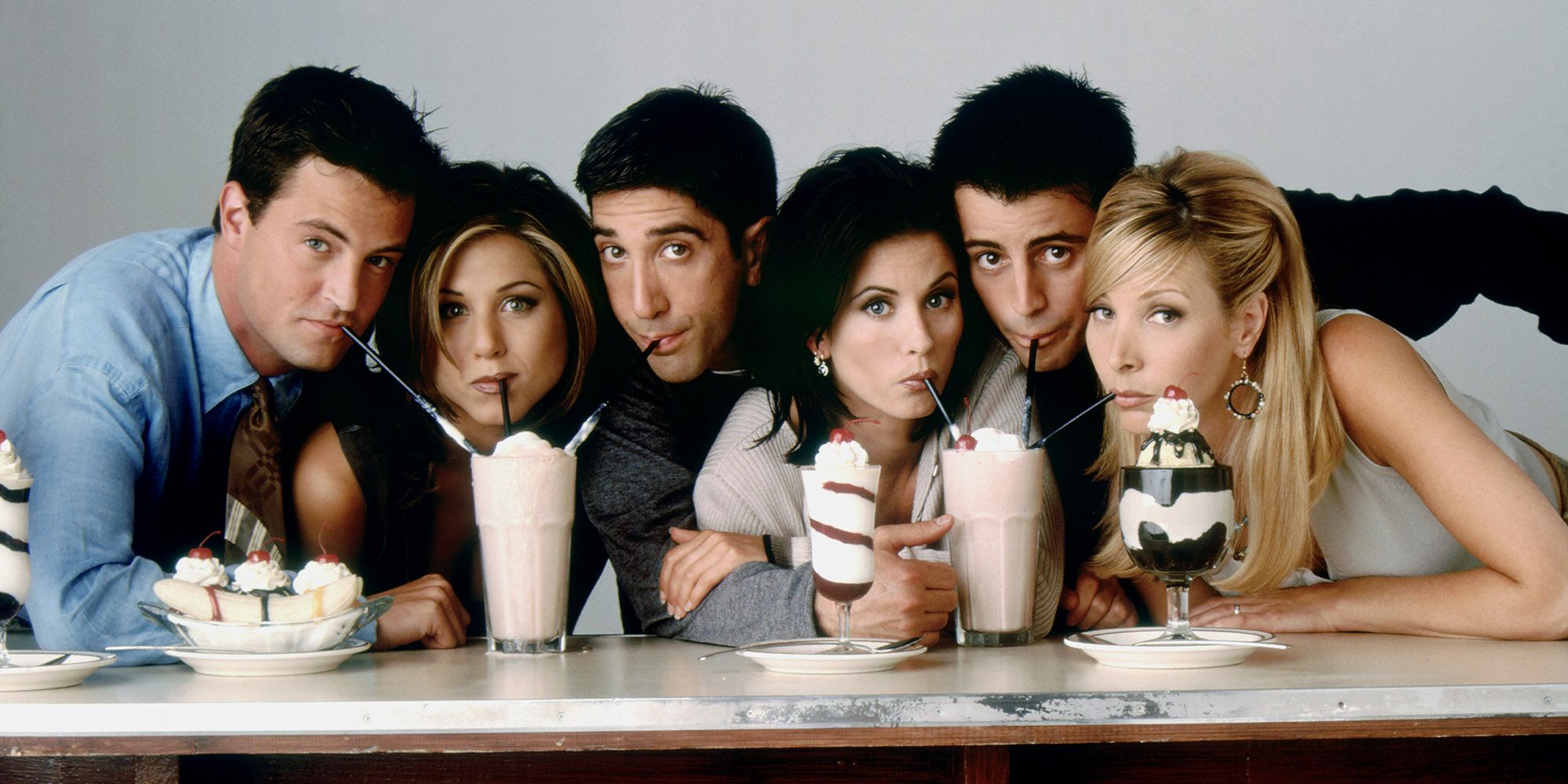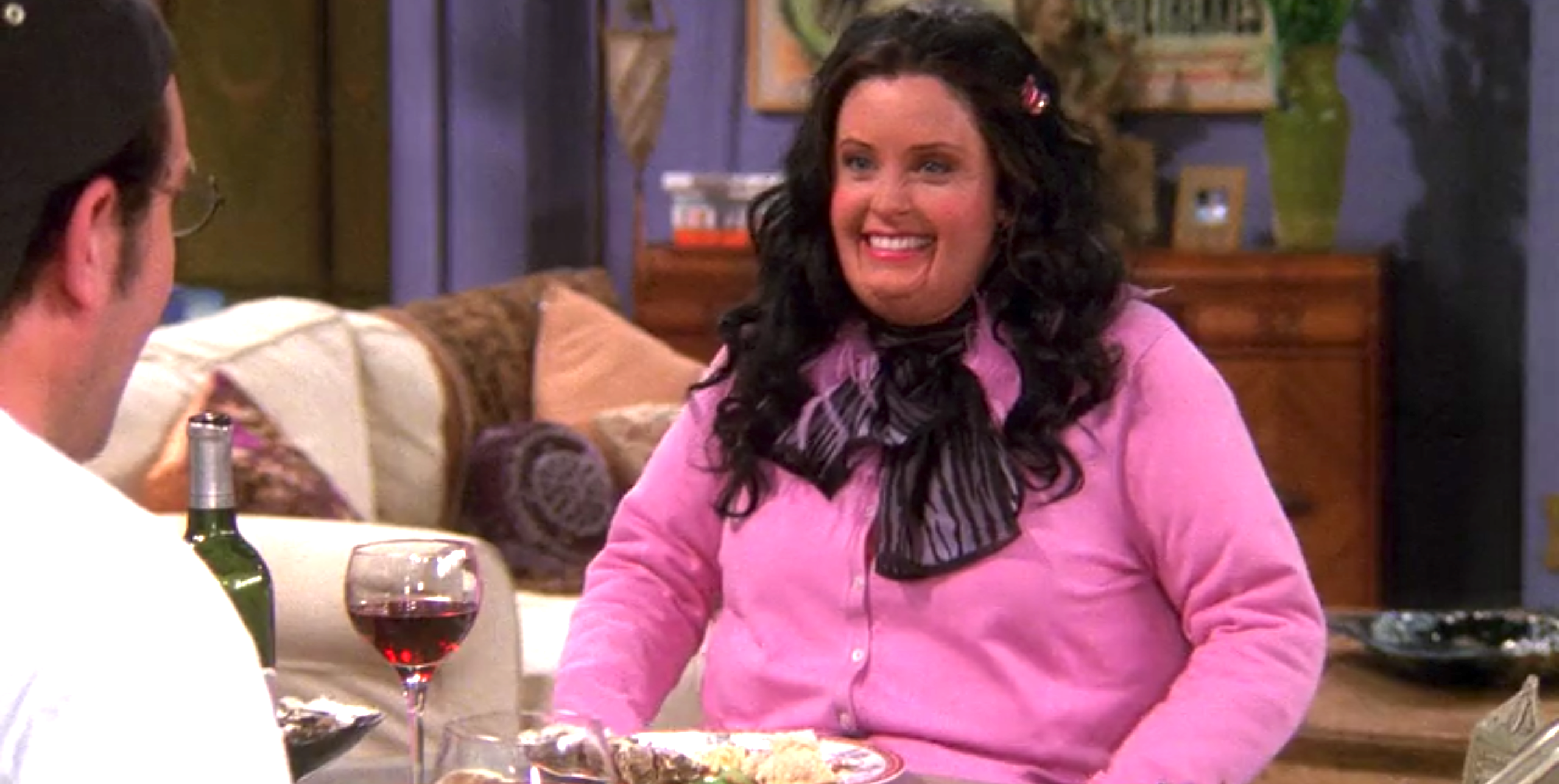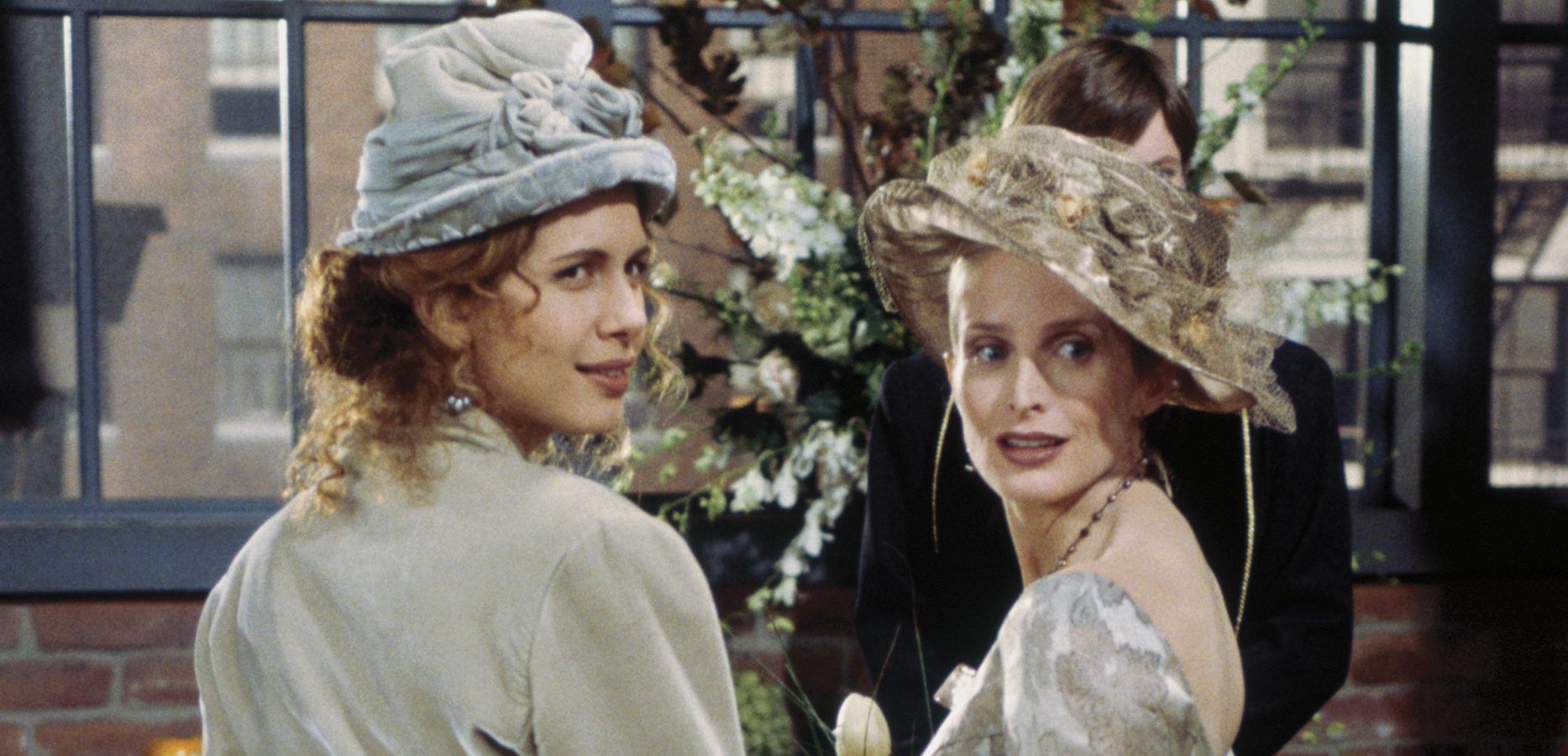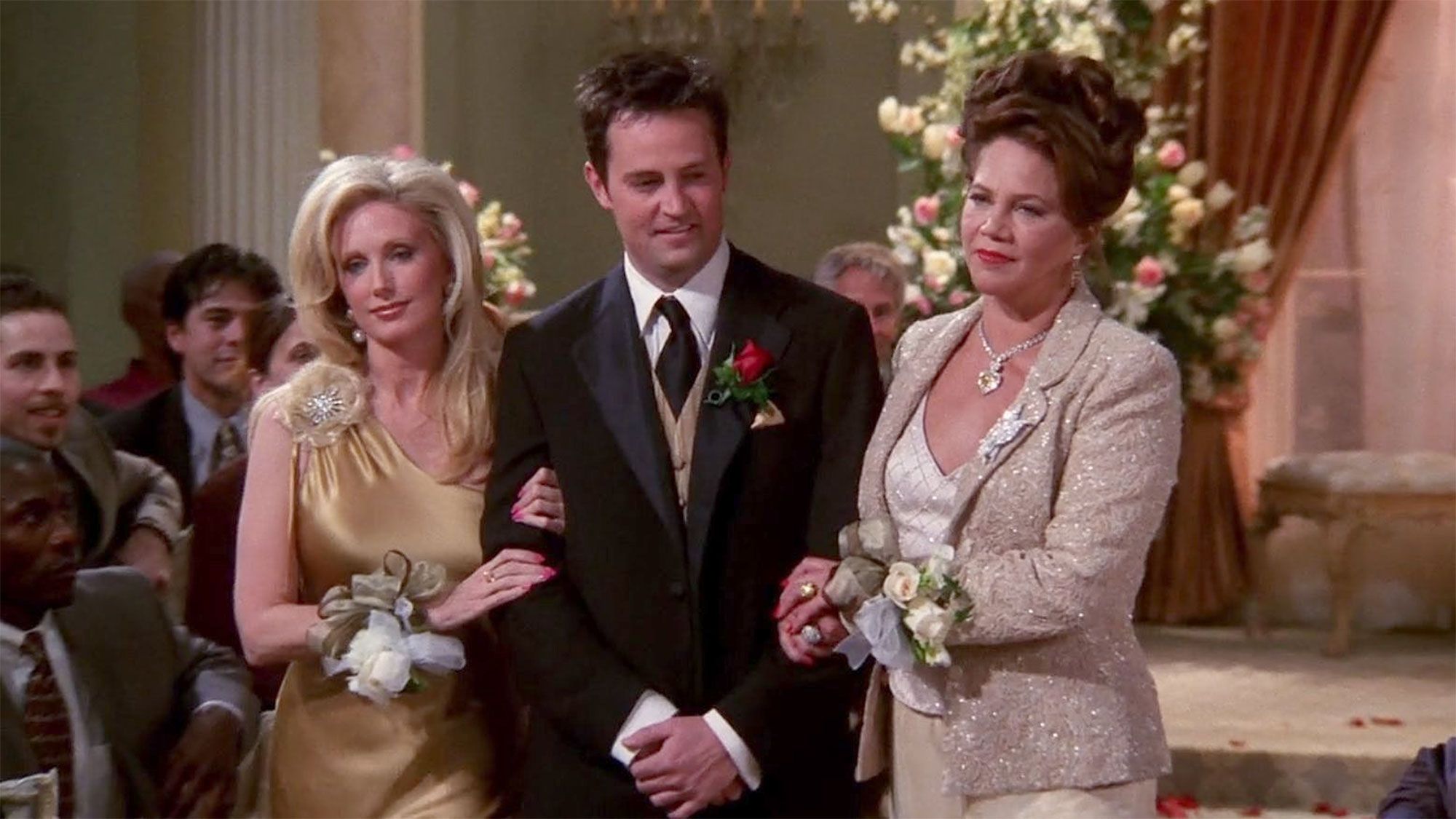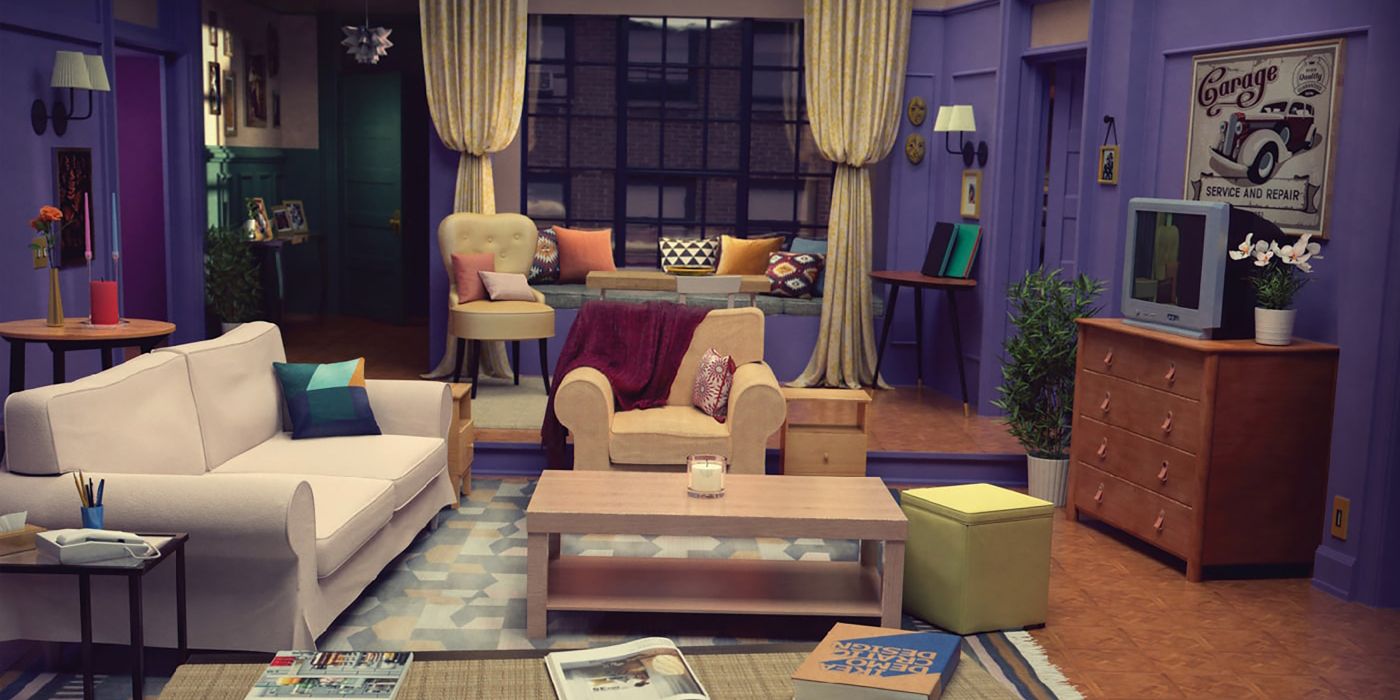NBC's Friends, which aired from 1994 to 2004, was and still is a cultural phenomenon. The show has a ton of fans, many of whom are asking for a revival or sequel, similar to what Will & Grace and Roseanne received. Unfortunately, numerous elements that made the show such a standout when it first premiered have definitely aged poorly. The biggest question, then, is why people still love the show so much, in spite of some very questionable elements?
The One With Fat Shaming
One of the show's most famous running gags was "Fat Monica," a younger version of one of the series' main characters, Monica Geller. The character is played completely for laughs and is constantly seeking both attention and food. It's only after overhearing a remark from her crush that she decides to try to lose weight. Monica's battle with her weight is one element that drives the character's need to control things.
The use of a character, namely a female one, for such obviously fat-centric jokes is definitely in poor taste. This is especially true given that Monica's more positive traits are stripped away when she's in her fat form, leaving a walking joke who seemingly only exists to eat. Even though the argument of representation could be brought up, the aforementioned lack of depth in the portrayal renders that argument moot. The show is completely unsympathetic toward Fat Monica and larger viewers might find that particular joke wearing thin.
The One With Homophobia
The show has numerous scenes, namely in the first few seasons, in which male characters experience "gay panic," rushing to prove their heterosexuality for fear of being seen as anything but. This is in spite of one character potentially being written as gay. Nevertheless, male same-sex relationships are not exactly portrayed in the most positive light. There are also a lot of gay jokes.
One notable point of controversy for the show was Carol, Ross's ex-wife. After revealing she was a lesbian, she went on to marry Susan Bunch in the landmark episode The One with the Lesbian Wedding. While a groundbreaking episode in its portrayal of a same sex wedding ceremony, one notable rule for broadcast was that there could be no kiss between the women. Thus, the episode still fell in line with the trend of reducing physical contact between same sex couples, something that is far less taboo today.
The One With Transphobia
In The One with Chandler's Dad, audiences are introduced to Chandler's father Charles Bing/Helena Handbasket, a gay man who performs as a drag queen. The character is portrayed by Kathleen Turner, and though it is implied that Charles is transgender, no depth is given to that. Again, much of the character is simply there for laughs or to be edgy, without much regard for shining a spotlight on an underrepresented group.
Given modern television's portrayal of LGBTQ+ individuals, this much-less-than-nuanced and arguably confused portrayal could definitely rub today's viewers the wrong way. With shows like Orange is the New Black and Pose, audiences have been exposed to LGBTQ+ characters that feel developed and deep, whereas Charles Bing was just another in the "estranged gay dad" line of comedy that was prevalent in many '90s sitcoms. Turner herself has admitted this storyline hasn't aged well.
The One Without People of Color
Despite taking place in cosmopolitan New York, the show is noticeably lacking in diversity. Even other predominantly white shows of the era, such as Seinfeld, feature more ethnically diverse characters. Given the other ways in which the show took advantage of its big city setting to be more progressive, this casting choice is one that definitely sticks out.
Shows such as Girls were criticized for their similarly ethnically homogeneous casts in the early 2010s, meaning that viewers looking back at Friends nowadays will be in for a rude (and white) awakening. This is especially true given the higher number of shows today featuring interracial relationships or predominantly non-white casts.
Friends' Reputation Precedes It
Friends' modern day audience can't just be made up of people who tuned in to every episode when they first aired. Similarly, surely those who were religious viewers when the series first began have gone back with modern eyes to watch it again. If so, why is the show popular enough to make people care about where they can stream it?
Friends, namely its characters, still hold up, albeit the warts are more noticeable. The show's themes of friendship amidst life's various struggles and milestones still resonate with all audiences, no matter their age. Those who grew up with the show are now looking back and having fond memories of not only when the show first aired, but of reaching the milestones the Friends characters do in their own lives. Similarly, viewers who were younger and may only be encountering the show for the first time, are now experiencing those milestones themselves. Thus, it's like they're growing with the characters, just like an older generation did.
If the show were to ever get its much desired revival, it would obviously employ some changes to be more in line with what modern viewers find tasteful. In this way, Friends is not only a way to look at how far viewers have come in their own lives, but also how far television has come.

